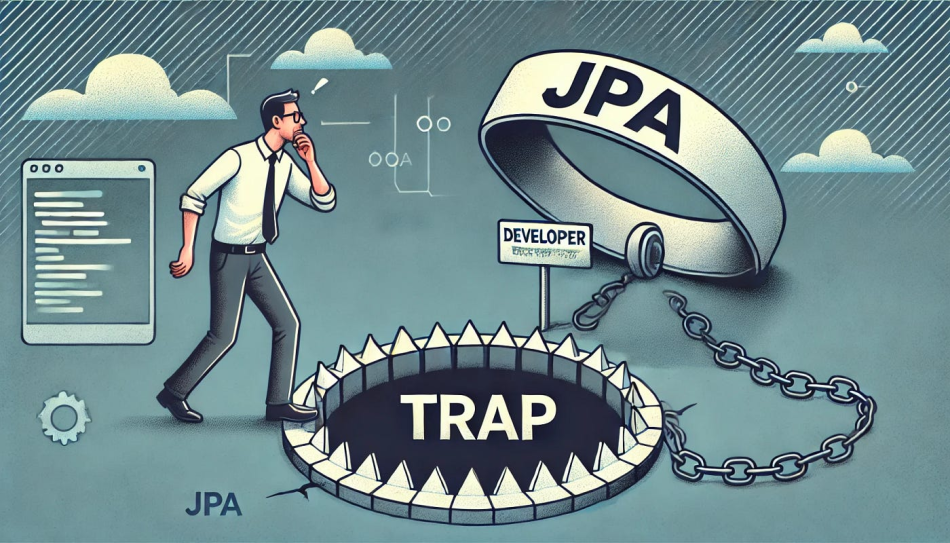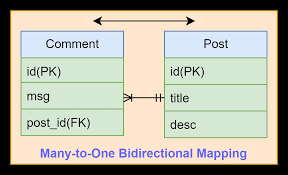Effectively Handling Cyclic References in JPA Bidirectional Relationships
 Tuanhdotnet
Tuanhdotnet5 min read

1. Understanding the Challenge of Bidirectional Relationships
Bidirectional relationships involve two entities referring to each other. While this improves navigation between entities, it can inadvertently create cycles in object graphs. Let's consider an example to illustrate this:

Example of a Cyclic Problem
Suppose we have two entities, User and Address, with a OneToMany and ManyToOne bidirectional relationship.
@Entity
public class User {
@Id
@GeneratedValue(strategy = GenerationType.IDENTITY)
private Long id;
private String name;
@OneToMany(mappedBy = "user", cascade = CascadeType.ALL, orphanRemoval = true)
private List<Address> addresses = new ArrayList<>();
// Getters and Setters
}
@Entity
public class Address {
@Id
@GeneratedValue(strategy = GenerationType.IDENTITY)
private Long id;
private String street;
@ManyToOne
@JoinColumn(name = "user_id")
private User user;
// Getters and Setters
}
The relationship is clear: a User can have multiple Address entities, and each Address refers back to its User. While intuitive, problems arise during serialization, especially with libraries like Jackson, which attempt to serialize the object graph recursively. This results in a StackOverflowError due to the cyclic references.
Symptoms and Common Issues
- Infinite Loops in JSON Serialization: The most visible symptom is infinite recursion when converting entities to JSON.
- Complex Debugging: Developers may struggle to identify the source of infinite loops because the recursion is hidden in serialization layers.
- Performance Bottlenecks: Cycles can increase memory consumption and slow down the application if left unchecked.
2. Best Practices to Resolve Cyclic References
2.1 Use of @JsonIgnore Annotation
One straightforward solution is to break the cycle at the serialization level by using @JsonIgnore on one side of the relationship.
@Entity
public class Address {
@Id
@GeneratedValue(strategy = GenerationType.IDENTITY)
private Long id;
private String street;
@ManyToOne
@JoinColumn(name = "user_id")
@JsonIgnore
private User user;
// Getters and Setters
}
Explanation:
- The @JsonIgnore annotation prevents the serialization of the user field when an Address object is converted to JSON.
- While this approach works, it can sometimes lead to incomplete data being returned in APIs, as the user field will not be included in the JSON response.
2.2 Use of @JsonManagedReference and @JsonBackReference
For a more controlled serialization process, Jackson provides @JsonManagedReference and @JsonBackReference.
@Entity
public class User {
@Id
@GeneratedValue(strategy = GenerationType.IDENTITY)
private Long id;
private String name;
@OneToMany(mappedBy = "user", cascade = CascadeType.ALL, orphanRemoval = true)
@JsonManagedReference
private List<Address> addresses = new ArrayList<>();
}
@Entity
public class Address {
@Id
@GeneratedValue(strategy = GenerationType.IDENTITY)
private Long id;
private String street;
@ManyToOne
@JoinColumn(name = "user_id")
@JsonBackReference
private User user;
}
Explanation:
- @JsonManagedReference is applied to the parent side (e.g., User) to include the child relationship during serialization.
- @JsonBackReference is applied to the child side (e.g., Address) to prevent back-references from being serialized, breaking the infinite loop.
- This solution retains essential data in the serialized JSON without running into cyclic issues.
2.3 Using DTOs for Data Representation
Another effective approach is to decouple entity serialization from API responses using Data Transfer Objects (DTOs).
public class UserDTO {
private Long id;
private String name;
private List<AddressDTO> addresses;
// Constructors, Getters, Setters
}
public class AddressDTO {
private Long id;
private String street;
// Constructors, Getters, Setters
}
In your service layer, map entities to DTOs explicitly:
@Service
public class UserService {
public UserDTO toUserDTO(User user) {
UserDTO userDTO = new UserDTO();
userDTO.setId(user.getId());
userDTO.setName(user.getName());
List<AddressDTO> addressDTOs = user.getAddresses().stream()
.map(address -> {
AddressDTO addressDTO = new AddressDTO();
addressDTO.setId(address.getId());
addressDTO.setStreet(address.getStreet());
return addressDTO;
}).collect(Collectors.toList());
userDTO.setAddresses(addressDTOs);
return userDTO;
}
}
Explanation:
- By creating DTOs, you avoid directly exposing entities, allowing for full control over the serialized structure.
- This approach enhances API stability and prevents cyclic reference issues altogether.
3. Extended Considerations
Handling Lazy Loading
Lazy loading in JPA can further complicate bidirectional relationships. If an association is lazily loaded, accessing it during serialization can trigger unexpected database queries. To mitigate this:
- Use @JsonIgnore or DTOs to control the fields being serialized.
- Use tools like Hibernate's Hibernate.initialize() to preload specific associations when necessary.
Circular References in Collections
For large collections, cyclic references can introduce additional challenges. If performance becomes an issue, consider:
- Pagination: Returning smaller subsets of data to avoid loading entire collections.
- Filtering: Excluding unnecessary fields from the API response.
4. Conclusion
Handling cyclic references in JPA bidirectional relationships requires a thoughtful combination of annotations, DTOs, and best practices. While annotations like @JsonIgnore and @JsonManagedReference offer quick fixes, DTOs provide a more robust solution, decoupling internal models from API responses.
By understanding the nuances of JPA relationships and tailoring your approach to specific use cases, you can build efficient, maintainable systems. Do you have additional questions or specific challenges? Comment below, and let’s discuss!
Read more at : Effectively Handling Cyclic References in JPA Bidirectional Relationships
0
Subscribe to my newsletter
Read articles from Tuanhdotnet directly inside your inbox. Subscribe to the newsletter, and don't miss out.
Written by

Tuanhdotnet
Tuanhdotnet
I am Tuanh.net. As of 2024, I have accumulated 8 years of experience in backend programming. I am delighted to connect and share my knowledge with everyone.